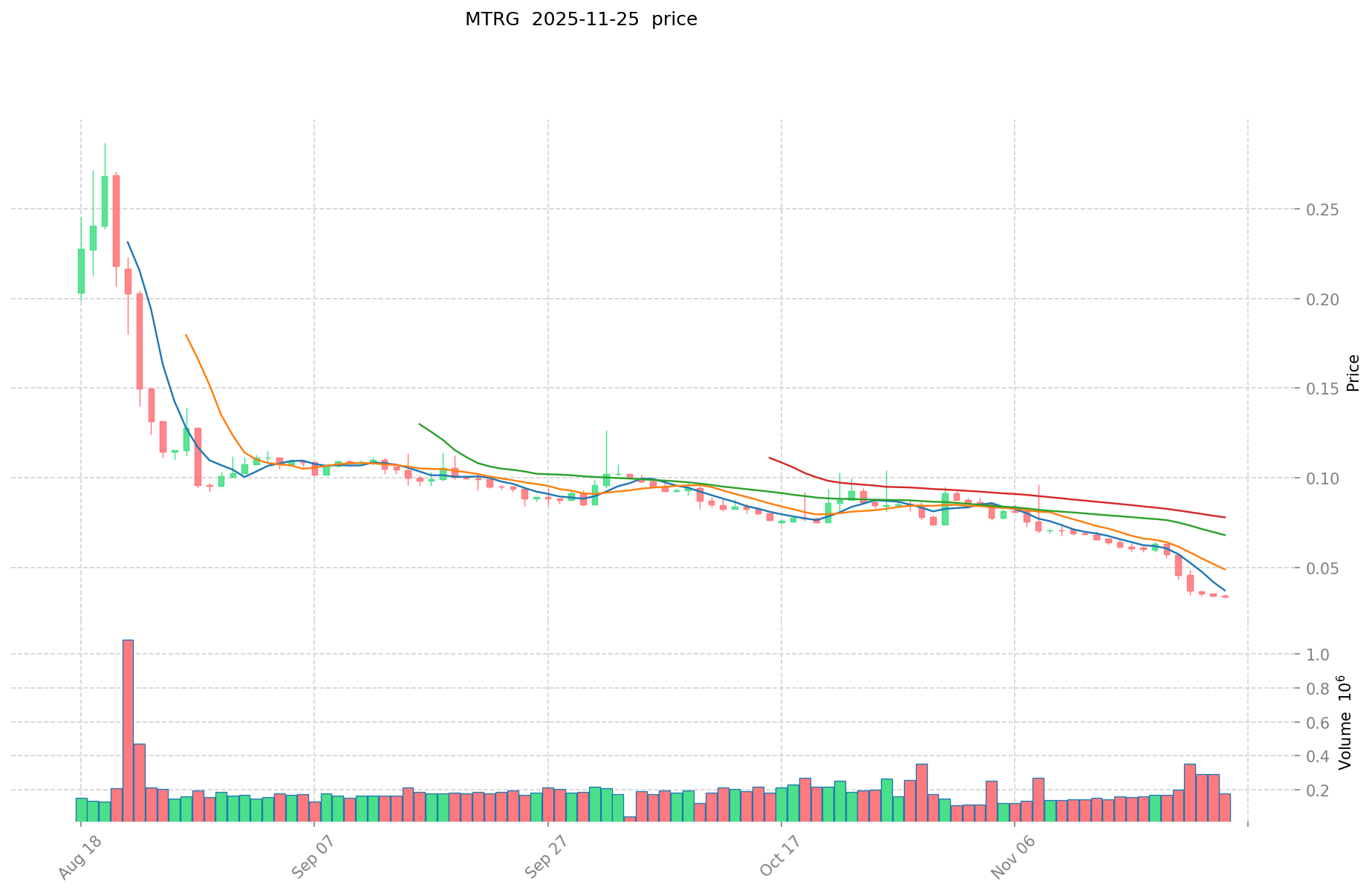What is MTRG: The Crypto Token Powering Meter.io's Blockchain Platform
Meter's Positioning and Significance
In 2020, Meter (MTRG) was launched to address the challenges of network scalability and high transaction costs in blockchain networks.
As a high-performance EVM-compatible public chain based on the HotStuff2 consensus, Meter plays a crucial role in the DeFi and smart contract ecosystem.
As of 2025, Meter has established itself as an innovative blockchain solution, offering a unique dual-token system with MTRG for governance and MTR for gas fees. The project continues to evolve with its active development community.
Origin and Development History
Birth Background
Meter was created in 2020 to solve the issues of scalability and transaction efficiency in blockchain networks. It emerged during the boom of DeFi and the increasing demand for high-performance blockchain solutions.
Meter aimed to provide a more efficient and cost-effective infrastructure for decentralized applications and financial services. The launch of Meter brought new possibilities for developers and users seeking faster and more scalable blockchain solutions.
Important Milestones
- 2020: Mainnet launch, implementing the HotStuff2 consensus mechanism for high throughput.
- 2021: Introduction of the dual-token system with MTRG for governance and MTR for gas fees.
- 2022: Expansion of cross-chain capabilities, enhancing interoperability with other networks.
- 2023: Growth of the Meter ecosystem, with an increasing number of DeFi protocols and dApps.
With the support of its community and development team, Meter continues to optimize its technology, security, and real-world applications.
How Does Meter Work?
Decentralized Control
Meter operates on a decentralized network of nodes spread across the globe, free from control by any single entity. These nodes collaborate to validate transactions, ensuring system transparency and resistance to attacks, thereby granting users greater autonomy and enhancing network resilience.
Blockchain Core
Meter's blockchain is a public, immutable digital ledger that records every transaction. Transactions are grouped into blocks and linked through cryptographic hashes, forming a secure chain. Anyone can view the records, establishing trust without intermediaries. Meter's unique architecture, combining EVM compatibility with the HotStuff2 consensus, enhances performance and scalability.
Ensuring Fairness
Meter employs a Proof-of-Stake (PoS) consensus mechanism to validate transactions and prevent fraudulent activities like double-spending. Validators stake MTRG tokens to maintain network security and receive rewards for their participation. This approach offers improved energy efficiency and higher transaction throughput compared to traditional Proof-of-Work systems.
Secure Transactions
Meter uses public-private key cryptography to secure transactions:
- Private keys (like secret passwords) are used to sign transactions
- Public keys (like account numbers) are used to verify ownership
This mechanism ensures fund security while maintaining pseudonymous transactions. Meter also implements additional security features through its smart contract capabilities and continuous protocol upgrades.
MTRG's Market Performance
Circulation Overview
As of November 25, 2025, MTRG's circulating supply is 32,276,310 tokens, with a total supply of 48,890,067 tokens.
New tokens enter the market through POS consensus mechanism, affecting its supply and demand dynamics.
Price Fluctuations
MTRG reached its all-time high of $16.47 on November 3, 2021.
Its lowest price was $0.03262054, occurring on November 25, 2025.
These fluctuations reflect market sentiment, adoption trends, and external factors.
Click to view the current MTRG market price

On-chain Metrics
- Daily Transaction Volume: $1,607.36 (indicating network activity)
- Active Addresses: 1,779 (reflecting user engagement)
Meter Ecosystem Applications and Partnerships
Core Use Cases
Meter's ecosystem supports various applications:
- DeFi: Projects leveraging Meter for decentralized finance solutions.
- Infrastructure: Meter provides a foundation for blockchain infrastructure development.
Strategic Cooperations
Meter has established partnerships to enhance its technological capabilities and market influence. These partnerships provide a solid foundation for Meter's ecosystem expansion.
Controversies and Challenges
Meter faces the following challenges:
- Technical Issues: Potential scalability bottlenecks or transaction delays.
- Regulatory Risks: Uncertain regulatory environment for cryptocurrencies.
- Competitive Pressure: The rise of other blockchain platforms.
These issues have sparked discussions within the community and market, driving continuous innovation for Meter.
Meter Community and Social Media Atmosphere
Fan Enthusiasm
Meter's community shows activity, with metrics such as daily transaction volume and wallet address growth. On X (formerly Twitter), posts and hashtags related to Meter gain traction. Factors such as price movements or new feature releases ignite community enthusiasm.
Social Media Sentiment
Sentiment on X shows polarization:
- Supporters praise Meter's security and decentralization features.
- Critics focus on issues such as price volatility or scalability concerns.
Recent trends indicate varying sentiment depending on market conditions.
Hot Topics
X users discuss key issues surrounding Meter, such as regulatory uncertainty and technological advancements, showcasing both its transformative potential and the obstacles to mainstream adoption.
More Information Sources for Meter
- Official Website: Visit Meter's official website for features, use cases, and latest updates.
- X Updates: On X, Meter uses @Meter_IO, with posts covering technical upgrades, community events, and partnership news.
Meter's Future Roadmap
- Ecosystem Goals: Support DApp development and user adoption.
- Long-term Vision: Become a key player in blockchain infrastructure and decentralized finance.
How to Participate in Meter?
- Purchase Channels: Buy Meter (MTRG) on Gate.com
- Storage Solutions: Use secure wallets for storing MTRG
- Participate in Governance: Engage in community decisions through governance mechanisms
- Build the Ecosystem: Visit developer documentation to contribute to the Meter ecosystem
Summary
Meter redefines digital currency through blockchain technology, offering transparency, security, and efficient transactions. Its active community, rich resources, and market performance make it stand out in the cryptocurrency field. Despite facing challenges such as regulatory uncertainties and technical bottlenecks, Meter's innovative spirit and clear roadmap position it as an important player in the future of decentralized technology. Whether you're a newcomer or an experienced player, Meter is worth watching and participating in.
FAQ
What is MRTG used for?
MRTG is used for governance, staking, and transaction fees in the Meter network. It powers the ecosystem, enabling users to participate in decision-making and earn rewards.
How much is meter governance?
As of 2025-11-25, one Meter Governance (MTRG) is worth $0.06231. This price is subject to market fluctuations.
Share
Content